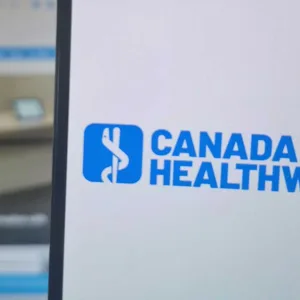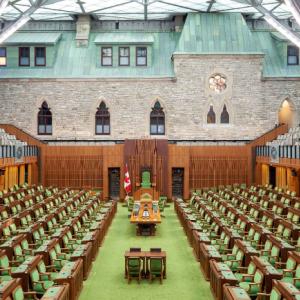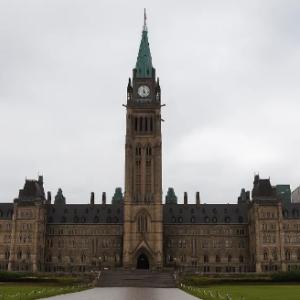Required Reading for Future Pandemics: the UK COVID-19 Inquiry
The U.K. COVID Inquiry is creating a much-needed push to update Infection Prevention & Control (IPAC) guidelines with respect to the predominant mode of transmission of SARS-CoV-2.
COVID has finally begun to be acknowledged as an airborne disease, but policy hasn't kept up on the issue of aerosol spread, including how to deploy HEPA, UVC, masking protocols and other measures. Successful mitigation hinges on accurately identifying the mode of transmission as early as possible and clearly communicating appropriate guidance.
It’s not that washing hands is bad or should be stopped. It’s just that it shouldn’t be the main message or relied upon to address the transmission of COVID in a meaningful way.
Thorough updating of Public Health and IPAC guidelines with new scientific knowledge surrounding airborne spread is required along with more room for critical thinking and speed during responses to outbreaks of infectious disease such as COVID.
Accurately identifying the mode of transmission is not just an academic exercise. It is key to mitigating death, disease, and disability related to COVID as well as avoiding the massive toll on productivity and the economy that this disease has taken.
There are pivotal lessons to be learned through the U.K. COVID Inquiry which has been ongoing for a couple years, but it has only recently reached Module 3: The Impact of the COVID Pandemic on Healthcare Systems of the U.K. Included in this are issues surrounding transmission mechanisms and Long COVID.
Much can be learned from the U.K. Inquiry. Our Canadian experiences responding to COVID had many parallels to those of the U.K. Countries around the world were similarly impacted since most were following the advice and guidance produced by the World Health Organization which consistently repeated — erroneously — that COVID was not airborne.
The U.K. has proven to be transparent about peeling back the layers of Public Health measures and delving into scientific misunderstandings with respect to the spread and potential mitigation of SARS-CoV-2. The U.K. COVID Inquiry is being chaired by retired judge Baroness Heather Hallett who promised the inquiry would be thorough and fair. Lady Hallett has already provided the first report of the inquiry indicating “fatal strategic flaws” and calling for an overhaul of the national civil emergencies system with ten recommendations, including “a radical simplification of civil emergency preparedness and resilience systems.”
She also recommended external teams should regularly challenge groupthink on the principles, evidence and advice on emergency plans. An important point in the Executive Summary is as follows:
"Advisers and advisory groups did not have sufficient freedom and autonomy to express dissenting views and suffered from a lack of significant external oversight and challenge. The advice was often undermined by ‘groupthink’.”
This is a relatable point as I refer to Chapter 4 in my book, notably pages 74 to 83, where I describe the challenges I experienced in conveying my concerns about SARS-CoV-2 early in the pandemic, including the risk and likelihood of COVID being an airborne disease.
A major independent report by expert witness Professor Clive Beggs was provided to the Inquiry for Module 3. Beggs’ report is essential reading for anyone interested in the COVID pandemic response and future pandemic planning. See below for a series of excerpts highlighting the most significant findings.

Meanwhile, in Canada, instead of calling for a national inquiry into our own COVID response, the federal government has created another agency. On Sept. 24, 2024, federal Ministers of Innovation, Science and Industry, and Health announced the launch of Health Emergency Readiness Canada (HERC).
The official announcement outlined key features of HERC once it is operational:
- Integrated decision making to build life sciences capacity
- Strengthened partnerships with industry, academia and international counterparts
- The development and maintenance of a Canadian industrial game plan to mobilize research and industry in the event of a health emergency
- World-leading innovation to advance next-generation technology platforms
Sounds nice, but how about accurate and timely identification of the main mechanism of transmission and being open to hearing from highly qualified people who disagree rather than engaging in groupthink?
Critical thinking and swiftness are not often features of expanding bureaucracies and, too often, people within large bureaucratic structures must go along to get along to move up the hierarchy. Different perspectives may be seen as a nuisance, or even adversarial to the bureaucracy's stated aims. The ability to be agile in response to rapidly changing circumstances is critical, even foundational, but it's wholly unaddressed by grafting yet another agency onto our suite of existing agencies.
Recall that in 2004 a previous federal health agency was created with a mission to promote and protect the health of Canadians in response to the 2003 SARS crisis: PHAC.
The Public Health Agency of Canada was created to provide “clear federal leadership on issues concerning public health and improved collaboration within and between jurisdictions.” SARS-CoV-2 and the massive multi-year COVID pandemic, which is still ongoing, puts much doubt on PHAC’s ability to do what it was designed to do.
How about another agency then? And no information regarding costing or the additional staff.
HERC is intended to “bridge the gap between research and commercialization, meaning Canadians could get faster access to most relevant and effective vaccines, therapeutics, diagnostics and other products, including when they need them the most."
Faster access is certainly important, but will another layer of bureaucracy really speed up access and do what Health Canada and PHAC could not?
Health Canada was relatively slow in approving much-needed rapid antigen tests for COVID early on, when other countries had already done so. It’s hard to believe that slow bureaucratic processes will become faster with even more bureaucratic processes.
---
Dr. Merrilee Fullerton is the former Ontario Minister of Long-Term Care. Her book chronicling her time in politics, including the events surrounding Ontario's early pandemic response, can be read here.
I leave you with a series of excerpts from the UK COVID-19 Inquiry Module 3 concerning significant points from Professor Beggs' report. I expect Baroness Hallett will have recommendations pertaining to the airborne nature of COVID-19 and the failure of Public Health and IPAC to appropriately address the virus' mode of transmission.
Page 24, paragraph 54 and 55:
“While primarily focused on SARS-CoV-2, the discussion here is equally applicable to other respiratory viruses, such as influenza, as well as to TB. Historically, this subject has been largely neglected by the mainstream IPC community, with the result many misconceptions and erroneous ‘facts’ have crept into scientific literature, (culminating) in the WHO and the Centers of Disease Control and Prevention (CDC) denying in 2020 that SARS-CoV-2 could be transmitted by the airborne route. Therefore, in order to learn lessons from the Covid-19 pandemic, it is important to understand how infectious respiratory particles behave once they have been exhaled into room air."
"... this affords the opportunity for NPIs, such as improved room ventilation and air cleaning, to reduce the viral load and thus mitigate the risk of transmission.”
Page 36, Fomite and contact transmission of respiratory viruses, “Key findings:"
-It was assumed ... that contact transmission was a major contributor to transmission, but there was little evidence of this from studies of other respiratory viruses.
-Evidence for the effectiveness of handwashing in Covid-19, influenza and other respiratory viruses is mixed, showing only modest benefits.
-Transmission through the air is likely more important than contact routes, though occasional contact transmission is also possible.
-The assumption that contact routes are a major contributor to transmission was flawed, and led to many IPC policy-makers, practitioners and researchers requiring a higher standard of causal evidence to accept that airborne transmission was occurring than they required for contact transmission.
Page 41, paragraph 105:
“... evidence largely does not support the historical assumption that the contact and fomite routes make a major contribution to the transmission of respiratory viral infections. Indeed, the authors of the two 2011 PIP reports on influenza both concede this ... stating: "Since the role of hands in the transmission of influenza has actually never been demonstrated, one may hesitate to attribute a great proportion to this pathway.'"
"... it is surprising that at the start of the Covid-19 pandemic, the default assumption amongst the IPC and public health professionals was that the fomite and contact routes made a major contribution to SARS-CoV-2 transmission ... the first confirmed epidemiological association between surface contamination and the transmission of SARS-CoV-2 did not emerge until 2023 ...”
Page 46 and 47, paragraph 115 and 118:
"Many medical and IPC professionals have misconceptions regarding the nature and behaviour of infectious respiratory aerosols. These misconceptions are historical, widely accepted and often repeated in medical textbooks and in scientific papers, despite being factually incorrect."
"While the historical controversy surrounding droplets and aerosols might appear rather academic, in reality, the misconceptions held by the medical community on this subject had a far-reaching impact on the preparedness of the UK and the world for the Covid-19 pandemic, as well as on the IPC measures adopted and the PPE used."
"... IPC advice issued in the UK (and overseas) during 2020 and much of 2021 focused on prevention of SARS-CoV-2 transmission via the droplet, contact and fomites routes, rather than through aerosols."
Page 112, selected Recommendations:
- "i. A more multidisciplinary approach should be taken to future pandemic preparedness by the UK Government, including but not limited to hospital IPC. This should specifically include scientific advice from experts in the physical sciences ..."
-"iv. ... In particular, the duration of time that someone is exposed is of critical importance and should be acknowledged in guidance."
-"vi. There is a need for further multidisciplinary research to better understand how air and infectious aerosols move around hospital wards, so that appropriate strategies and standards can be developed for hospital ventilation systems to mitigate the transmission of infection."
"vii. There is a need for robust evidence and guidelines on the deployment of portable supplementary air cleaning devices (both HEPA and UVC devices) in hospitals, before and during the next pandemic. The evidence base in support of portable HEPA devices, in particular is reasonably strong."
"ix. ... guidelines need to consider the risks posed by patients and HCWs with regard to Covid-19 and influenza on general wards and in non-clinical areas such as waiting and staff rooms, so that prescribed ventilation regimes fulfil their role in the hierarchy of IPC controls to ensure that viral loads in the room air are maintained at safe levels.
"They also need to consider the role that CO2 monitoring might play in ensuring that day-to day ventilation rates in clinical and non-clinical spaces are maintained at appropriate levels."









